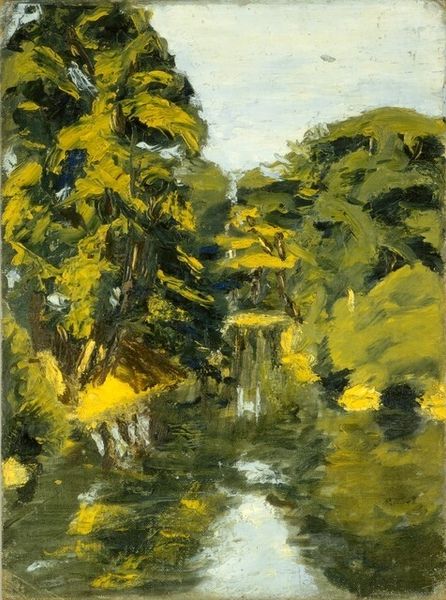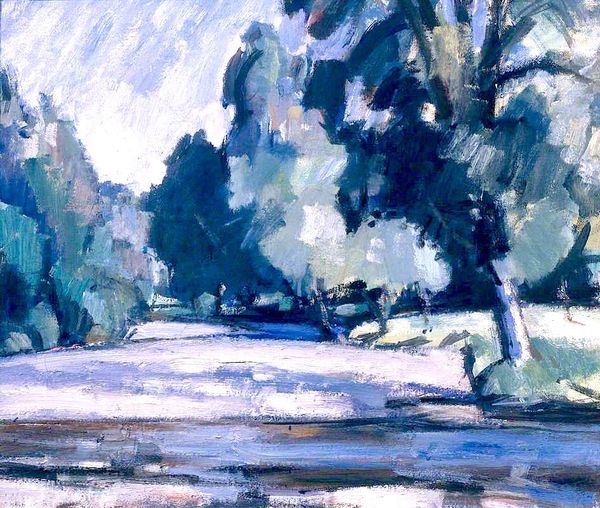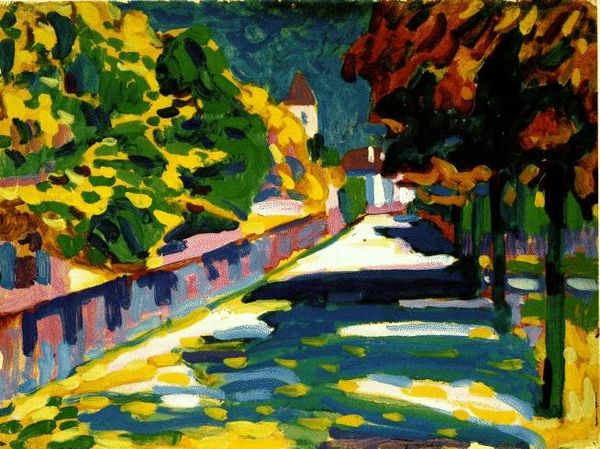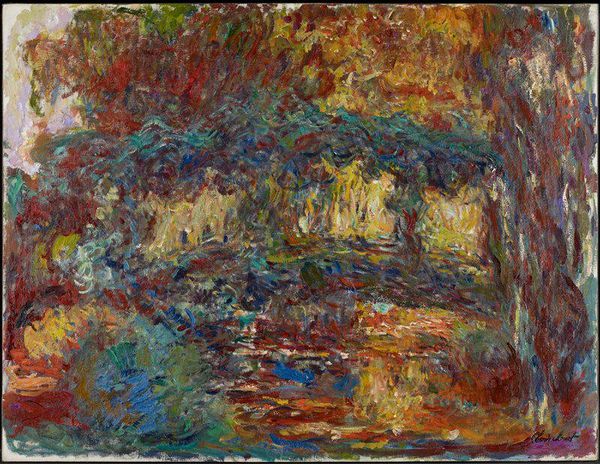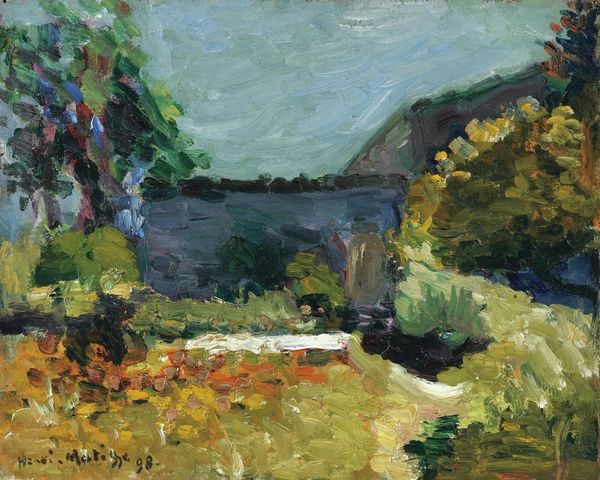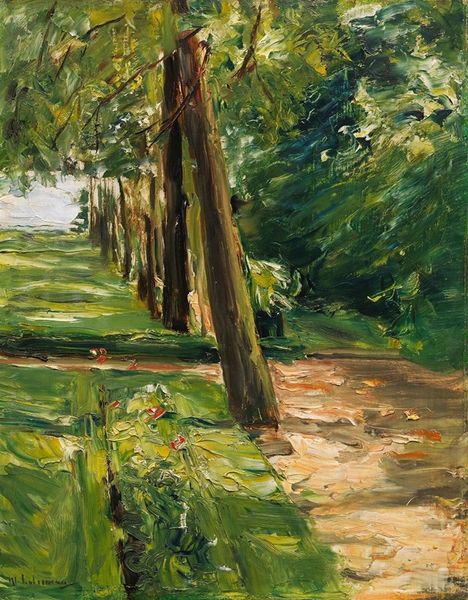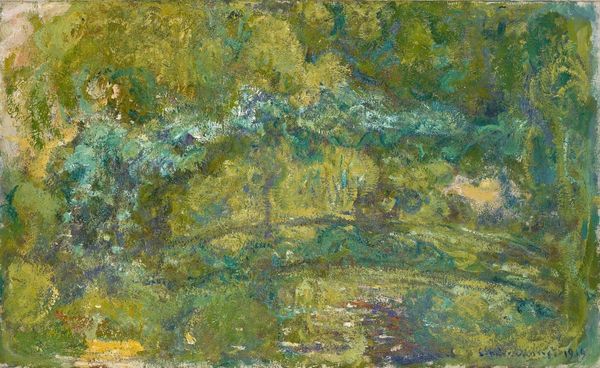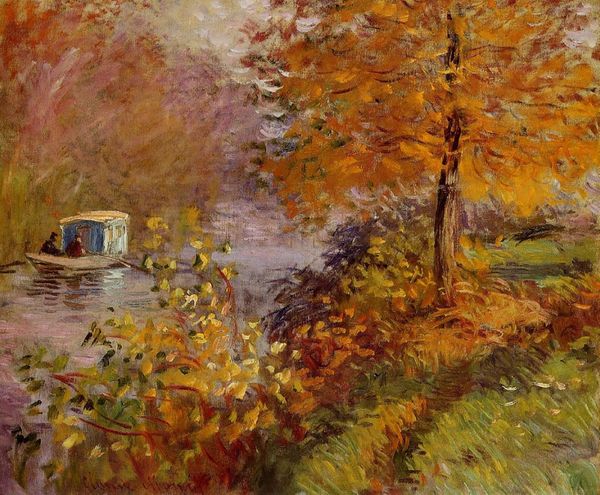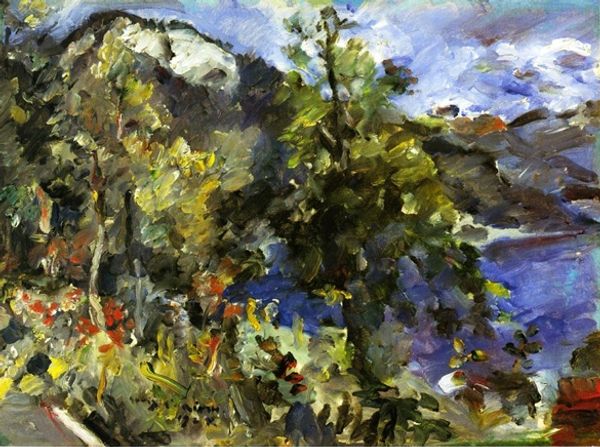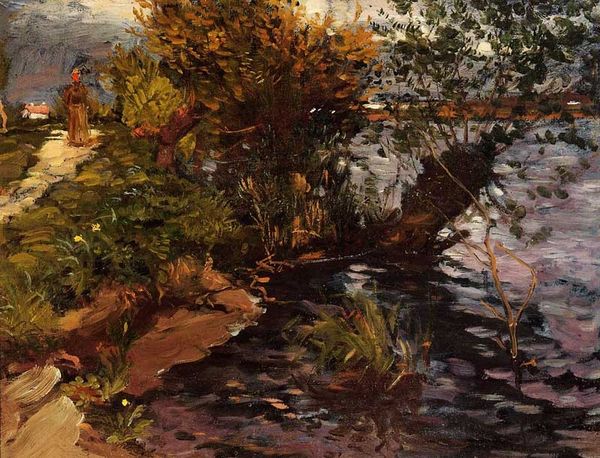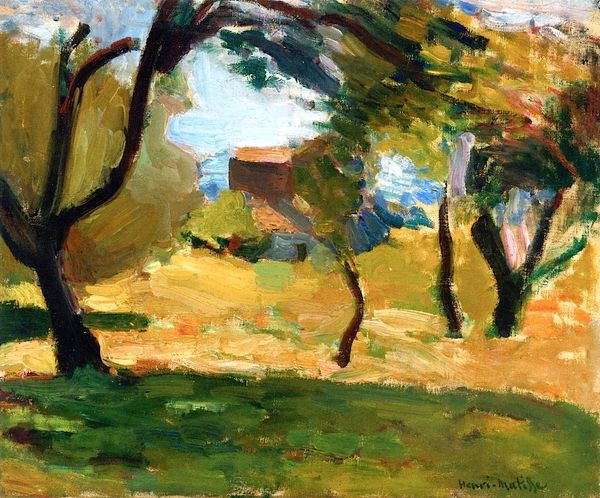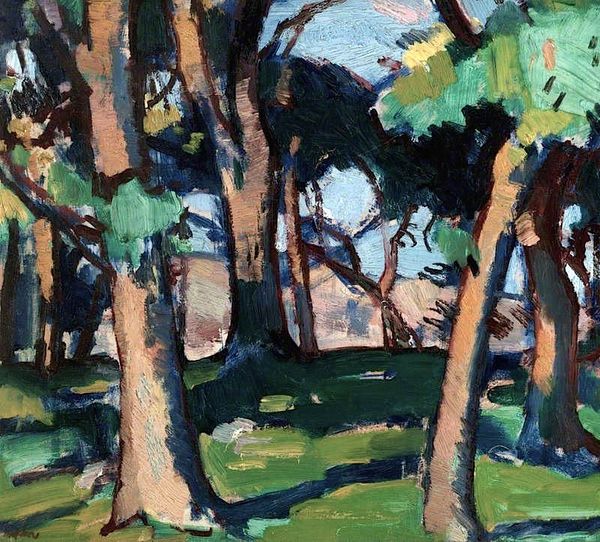
Dimensions: 40 x 48.6 cm
Copyright: Public domain
Curator: This is Theodore Robinson's "The Bridge at Giverny," painted in 1891. It’s currently held in the collection of the Museum of Fine Arts, Houston. Editor: It strikes me immediately as very subdued in its palette, almost melancholic. The composition feels less about the bridge itself and more about the hazy atmosphere that envelopes it. Curator: That muted quality is key to understanding its place within Impressionism. Robinson, influenced by Monet during his time in Giverny, focused intensely on capturing light and atmosphere in a very specific time and location. Note the textured brushstrokes, visible materiality. Editor: And those loose, almost broken brushstrokes, they dissolve the forms, don’t they? The bridge, the trees, the water—everything feels softened, filtered through memory perhaps? What role does this kind of depiction have for people viewing this back in 1891? Curator: Precisely. That dissolution emphasizes the ephemeral quality of the moment, something the Impressionists strived for. It moved away from traditional, idealized landscape painting toward a more personal, subjective experience. Consider the growing urbanization of the time; works like these became increasingly appreciated by those longing for respite from rapidly industrializing society. Editor: So, the rural setting becomes a haven—an idealized past in contrast to modern disruption? It seems that even the architectural element, the bridge, is completely dominated by the natural elements around it. Curator: That's right. While the bridge offers a structural anchor, it's ultimately subordinate to the light filtering through the trees and reflecting on the water. Robinson carefully arranges the elements to draw our eye around the canvas, experiencing the scene almost as a momentary glimpse, an experience more so than a physical place. Editor: I now find myself admiring that careful brushwork and that sense of fading light in equal measure; this is a window to a serene moment. Curator: Agreed. It encapsulates both Robinson’s skillful manipulation of form and light, and reflects that pervasive late-19th century interest in creating intimate and fleeting encounters with the natural world.
Comments
No comments
Be the first to comment and join the conversation on the ultimate creative platform.
